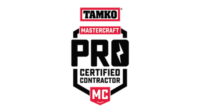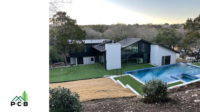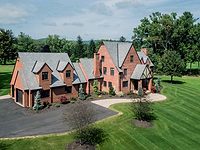Study from Bob Behrends Roofing Shows Energy Efficiency of Metal Roofing

Standing seam metal roofing helps to cool your home the most, according to a study from Bob Behrends Roofing, LLC. Photo: Bob Behrends Roofing, LLC.
With record-breaking temperature events on the rise, a Colorado-based roofing company is showing how metal roofing can help customers save on energy costs.
In a release, Bob Behrends Roofing notes how, every year, more and more people are searching for ways to make their home as energy efficient as possible.
"Part of that search, includes a cool roof. That is, a roof that helps to cool your home during the hot summer months," the company said. "With the climate warming, we decided to research and collect data showing, of the roofing materials available to us Coloradans, which ones are the coolest."
According to the company, the coolest roofing material is the one with a heat emittance and solar reflectivity closest to 1.0. Asphalt shingles are the most popular roof covering, and most manufacturers make cool, EnergyStar Rated shingles. These cool shingles offer the highest heat emittance at .90. However, the company notes, they offer the lowest solar reflectivity of .15 to .25.
"Unfortunately, these shingles aren't available to us Coloradans without special delivery," the company said.
Concrete tiles also offer a high heat emittance. However, their solar reflectivity is on par with asphalt shingles, at only .22. Clay tiles offer better solar reflectivity at .43, although this isn't nearly as good as sheet metal roofing. Sheet metal roofing, such as standing seam and corrugated/PBC perform well at cooling a home. These have a solar reflectivity of .67 and a heat emittance of .85, regardless of color.
As Bob Behrends Roofing notes, helping to cool a home isn't the only reason to turn to metal roofing. Unlike traditional asphalt shingles, metal is recyclable. A metal roof also lasts two to three times as long as traditional asphalt shingle roof since they're significantly more durable. Lastly, sheet metal roofing is much more resistant to hail, fire, and high-wind than most other roofs.
Looking for a reprint of this article?
From high-res PDFs to custom plaques, order your copy today!





